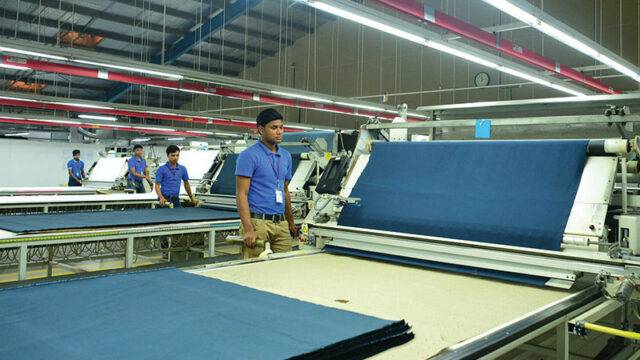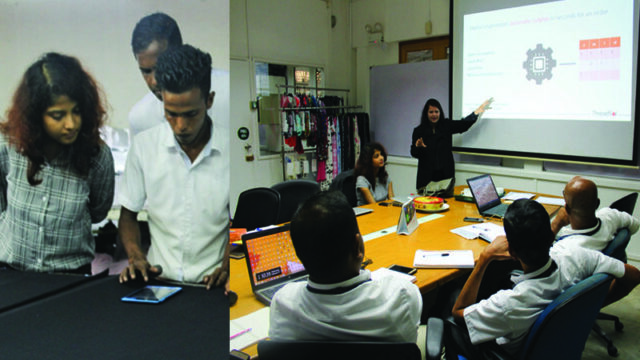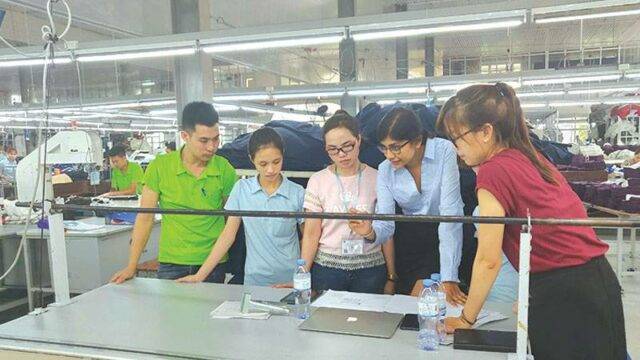GJM (Luenthai) cuts fabric wastage to boost its top-line with FastReactFabric (formerly IntelloCut)
GJM improves their processes to generate real-time optimised plans, fabric tracking and reports with the objective of boosting performance and visibility
GJM Improves top line growth by automating key business process in the fabric cutting room with FastReactFabric.
Guangzhou G.J.M. garment manufacturing factory is part of the Luenthai Group (China), one of the leading fashion and lifestyle apparel and accessories manufacturers in the world. From a small family-run enterprise in the 1960s, the Luenthai Group became a public-listed company in Hong Kong Stock Exchange in 2004. The Group have over 50,000 employees with 20 production facilities, and sales offices in strategic locations around the world. Guangzhou G.J.M. produces knitted Knits Sleepwear, Woven Sleepwear and Lingerie, and has a capacity of 45,000 garments per day.
The Challenge
The dedicated team at GJM wanted to adopt the latest technology that could tackle material management problems in their factories, and help them in saving cost and time – eventually boosting their top and bottom line.
- Manual fabric tracking on the production floor is a difficult and time consuming activity. The team wanted to move towards a technology-driven solution that could compile all the data in one place and impart transparency into their processes.
- In order to achieve better utilisation of fabric, wastage tracking becomes an important factor. The factory needed to have better knowledge and impact of avoidable wastage.
- Due to real-time changes on the floor, it was challenging for the factory team to reconcile fabric performance reports based on the actual parameters, hence impacting the final consumption in real-time. The team needed a live tracking system that could auto-calculate and reconcile the reports, incorporating real-time challenges/changes faced, while production ran.
- Although there was fabric tracking and end-bit management in the factory it was difficult to find out the current situation of fabric or knowing the current availability of fabric. This impacted decision making on whether to use the fabric or consider it as waste.
The Solution
1. Improved fabric tracking process
As the primary aim of the implementation, the team structured the metrics for measuring fabric utilisation. Structured processes with factory process owners were identified, trained and set up. The fabric tracking process was improvised with the ultimate objective of measuring used fabric, wastages and saved fabric, to highlight the scope of wastage reduction and excess fabric.
2. Real-time fabric wastage segregation
During implementation, the team set up metrics to understand the sectors contributing to overall wastage so that the scope of improvement can be easily identified. Wastage, as overall metrics, does give visibility for identifying the major reasons for fabric wastage. Real-time fabric wastage segregation helps in highlighting the major contributors for fabric waste generation so that the corrective measures can be taken, and in turn, reduce the overall wastage boosting performance and visibility.
3. Automated consumption summary report
Identifying correct fabric consumptions on the floor was an important task in order to identify the scope of cost reduction and to help boost profits. The team had set up an automated consumption summary report with respect to fabric used, to understand the scope of increasing shipment quantities and/or reducing fabric purchase. Real-time consumption tracking helps in pre-emptive plan modification to reduce the consumptions to an optimum level.
4. Real-time decision making
With the help of the Cut module of FastReactFabric (formerly IntelloCut) the GJM team could know the current situation of the fabric and could make real-time decisions, and utilise the end-bits in a planned way. This gave the factory, an opportunity to save the fabric in roll form.

Smart Fabric Planning with FastReactFabric
Stop wasting fabric and start increasing profit. Buy fabric with accuracy and cut with confidence.
Related testimonials
South Asia

#FabricOptimisation
Univogue Group boosts fabric utilisation by 2% with FastReactFabric (formerly IntelloCut)
The innovative apparel supplier is committed to continuously learning and developing, and investing both human and financial capital, to stay…
South Asia

#FabricOptimisation
Hoodvian Group automates fabric planning and tracking with FastReactFabric (Formerly IntelloCut)
Hoodvian achieves resounding results with the implementation of FastReactFabric and the group’s continued investment in innovation and digital transformation.
South East Asia

#FabricOptimisation
FastReactFabric (formerly Intellocut) helps Song Hong to reduce 60% of fabric planning time
FastReactFabric accounts all the wastages on the cutting floor and reconciles the data in the reports for any desired date…